From coast to coast across Canada, the wine industry is booming. In a four-year period, the number of wineries in Canada jumped by over 100 and continues to grow. In the Great White North, worldly winemakers don’t play by conventional rules. Low-intervention wines made with wild ferments and organic grapes are on the rise, while skilled winemakers create world-class products in Canada’s extreme terroir.
From the outside, it may seem that Canada’s wine industry is made up of ice wine and not much more. But in fact, the Canadian market has a thirst for local wines — and until now, that’s where they have stayed. But, as ambitious producers come through the ranks, their wines are gaining admiration and the international community is taking note, with exports of Canadian wine valued at $20.3 million in 2020.
There is a whole hoard of up-and-coming producers whose unique styles and innovative techniques prove that Canada’s should be on every wine lover’s radar. In this young region, winemakers do not have to follow the rules and traditions of the past; they are instead free to create their own. From the West Coast to the East, here are the winemakers who are turning Canada into a wine region to watch.
Don’t miss a drop!
Get the latest in beer, wine, and cocktail culture sent straight to your inbox.
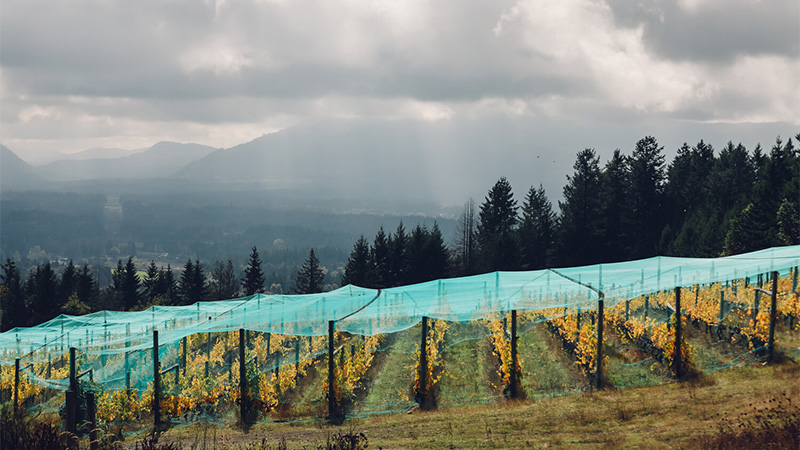
Island Wines
Canada’s West Coast is where Averill Creek Vineyard calls home. Located in the Cowichan Valley of Vancouver Island, the estate’s vineyards sit on the moderate southeast-facing slope of Mount Prevost, eight miles from the coastline.
Brent Rowland, the winemaker at the helm of Averill Creek, began his career as a young sommelier, then moved to Australia to study oenology and viticulture at Adelaide University. Thereafter, he worked at renowned Australian wineries By Farr and Alpha Box & Dice. He followed this with harvests at Escarpment in New Zealand and Calera in California, among many others. “In my travels, I have found that the wines that are the most interesting were the ones that were played with the least,” he says.
The Averill Creek vineyards are situated in cool-climate latitudes, creating a distinct growing environment in which vineyards experience long daytime hours, even when temperatures drop significantly in the fall. This allows grapes to hang on the vine for an extended period without sugar spiking and acid dropping. In this environment, grapes can achieve full phenolic ripeness with complex flavor development.
Collecting tips from his “liquid mentors” — who taught him how to adapt classic winemaking ethos to a specific region — Rowland creates wines that are a clear expression of site and vintage using a non-interventionist approach. Whole-bunch fermentation creates perfumed, poised and elegant Pinot Noirs, and textural whites are enhanced by lees aging. Averill Creek’s 2018 “Somenos” Pinot Gris is among Canada’s most complex and finest iterations.
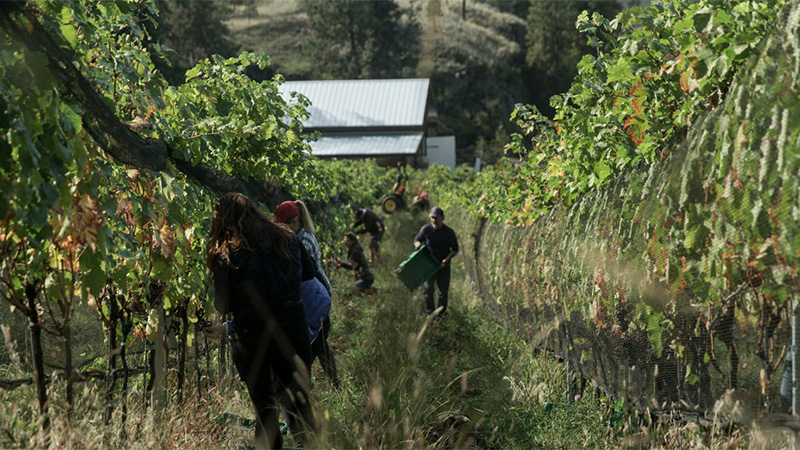
The Heart of the Okanagan
The vineyards of the Okanagan Falls frame Lake Skaha in the South Okanagan. This picturesque backdrop is home to the serene family winery Echo Bay. The vineyards, planted in 2013, sit on steep slopes leading into a valley toward the lake. The surrounding vegetation is lush and green, complete with century-old trees.
As a first-generation winemaker, Kelsey Rufiange takes the lead at her family’s winery. After finishing a degree in human geography, she traveled to New Zealand to study oenology and viticulture at Lincoln University. She then worked harvests in New Zealand, Australia, and the U.S. before returning home to British Columbia.
“The Okanagan can seem a bit like the Wild West in regards to grape growing,” Rufiange says, as the area’s vast range of microclimates allows for more experimentation with different grape varieties and wine styles. The top red grape planted in B.C. is Merlot, which accounts for only 14 percent of the region’s total acreage. Compare this with the Willamette Valley, where the top- planted Pinot Noir grape accounts for 64 percent of the total vineyard area.
For Echo Bay, Rufiange makes a more classic Bordeaux-style blend from estate fruit. She also makes several natural wines under her experimental label, Else Wines, which sell out in minutes. Here, you will find punchy Pét-Nats, intriguing skin contact wines, and piquettes, all made to push boundaries and expectations. A small selection of Echo Bay’s wines are currently available in the U.S., and Else Wines will be heading to American bottle shop shelves during the summer of 2022.
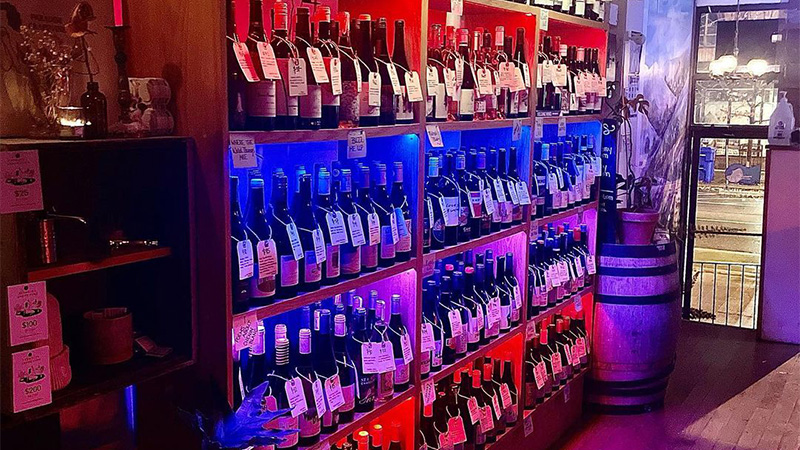
Cityscape Wineries
The urban backdrop of bustling Toronto is home to Paradise Grapevine — a hybrid business of wine bar, bottle shop, import agency, and wine producer. The bar sits in what was once the hole-in-the-wall Greek diner Menalon. The Menalon sign still sits front and center of the entrance, paying homage to its decades-long legacy. Inside, a dimly lit bar is brightened by neon lights.
Christian Davis and Dave Everitt are the pair behind Paradise Grapevine. Previously, Everitt had worked as a beer brewer and Davis on the service side. For the former beer professionals, wine was always a curiosity. “We’d go on trips to the States or Europe or wherever and bring back bottles to try and share with one another and with other friends,” Davis says. This interest developed into a passion and, soon, a career, leading them to open their wine bar in 2018 and release the first vintage of Paradise Grapevine wines in 2019.
They source grapes from farmers in the Niagara region of Ontario and make their wines at a shared facility in Creemore, around 75 miles outside Toronto. Their splashy natural wines are as bright as the pink and blue lights in their bar.
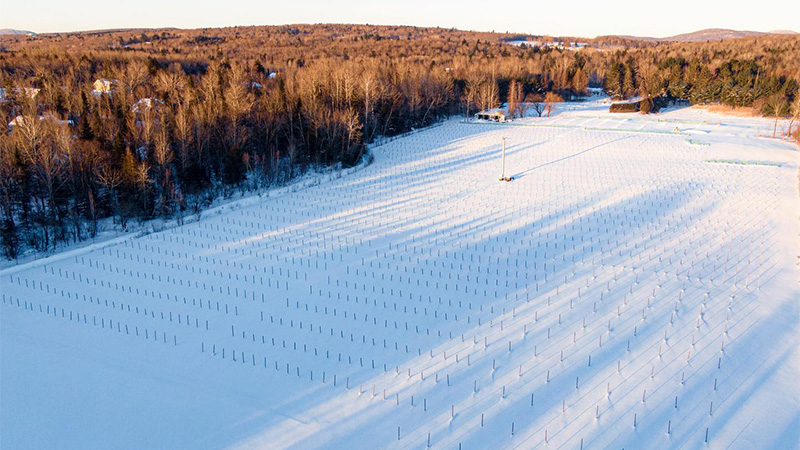
The Extreme Limits of Viticulture
The perception of Québec’s wine industry has long been tied to ice wine, hybrid grapes, and fruit wine — until now. Today, the region produces sought-after wines from innovative producers.
Frédérick Simon is one such vigneron. He — along with his wife Catherine Bélanger — has worked in the wine industry since the late 1990s. Bélanger owns Montreal wine bar Pullman Bar à Vin, while Simon, after long working in hospitality and importing, now owns wine label Pinard et Filles.
In Québec’s extreme conditions, Simon produces 16 cuveés from two sites in the city’s eastern townships. “The growing season is short and moody, with no two vintages in the past decade the same,” he says. In such a marginal climate, there’s a real possibility that grapes will not ripen. The vineyards here require careful planning with specific early ripening varieties that are planted on the right sight. Simon works with both Vitis vinifera vines and hybrid grapes — the latter requiring a different approach to winemaking.
This cool climate produces grapes with riper, thicker skins and seeds, which leads to more concentrated wines. “Longer skin contact is necessary, and wines are less sensitive to oxidation, even with no SO2 added,” says Simon. Put together, these elements produce the style of electric natural wines that Pinard et Filles has become known for, and show what is possible in a precarious climate such as Québec’s. A plus? These products are widely available in the U.S. through Zev Rovine Selections.
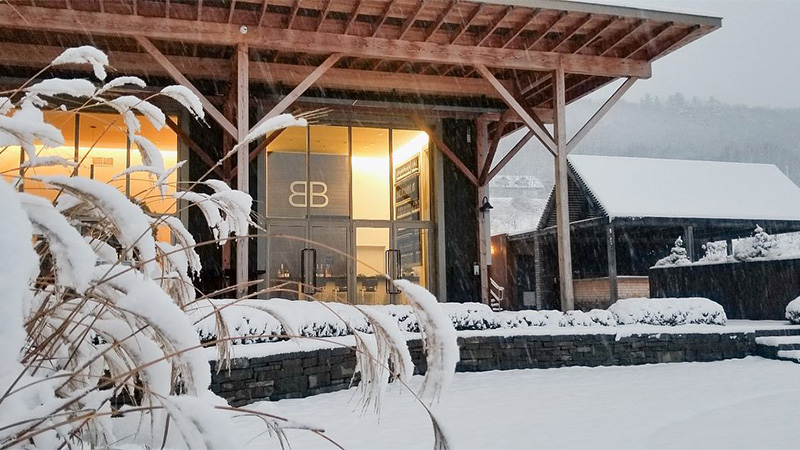
Legendary Sparkling Wines
In Canada’s extreme east, Benjamin Bridge winery’s cool climate mirrors that of Champagne. Yet, unlike Champagne, its wines show a precise salinity that truly expresses its coastal climate.
Benjamin Bridge wines — grown in the Annapolis Valley near the Bay of Fundy — are reflective of the nurtured ecosystem they come from. Along with his team, head winemaker Jean-Benoit Deslauriers’ priority has always been creating a resilient vineyard through biodiversity. With a more recent succession of warmer vintages due to climate change, the wines have evolved with their environment. When Benjamin Bridge began two decades ago, the sparkling wines had youthful tension. Today, with a warmer climate and later pick date, the bubblies are full of more richness and texture. Along with sparkling wines, the winery produces razor-sharp whites, aromatic Pét-Nats, and even a non-alcoholic piquette.


